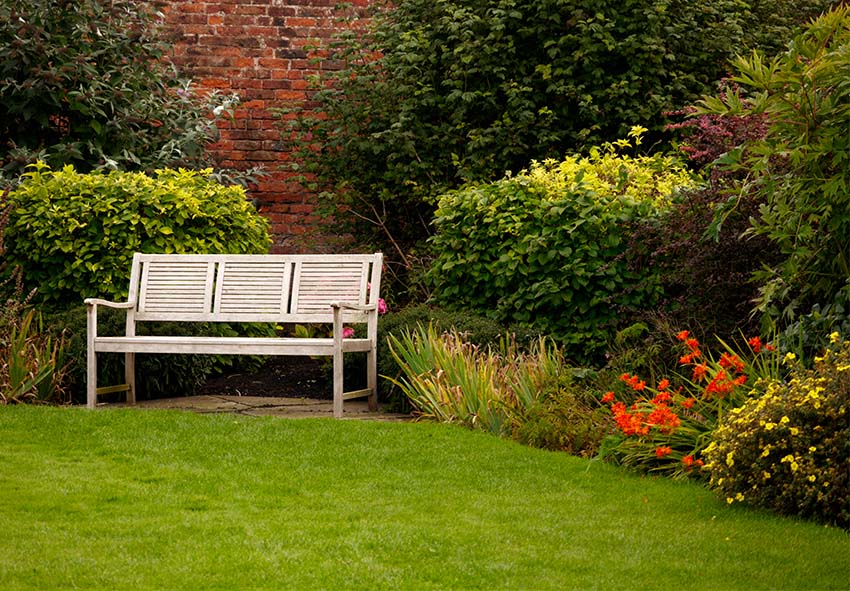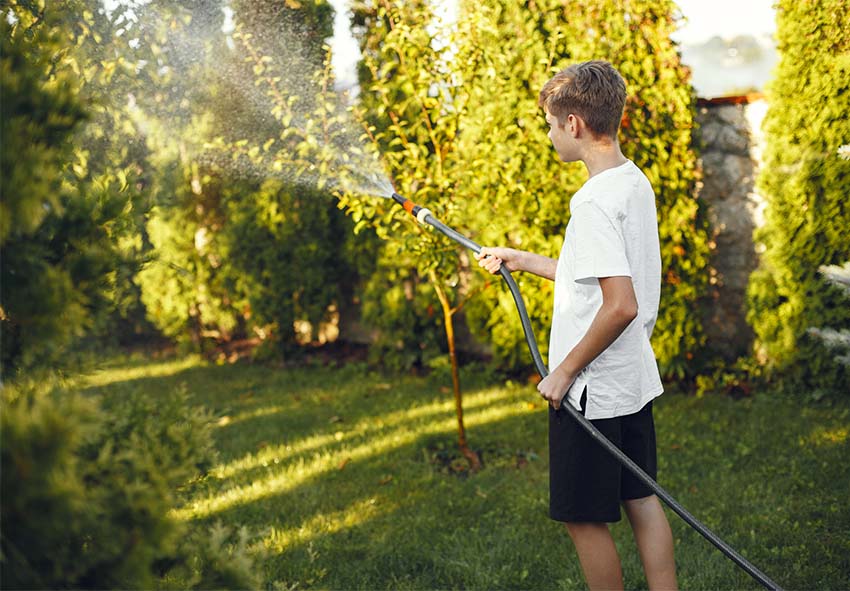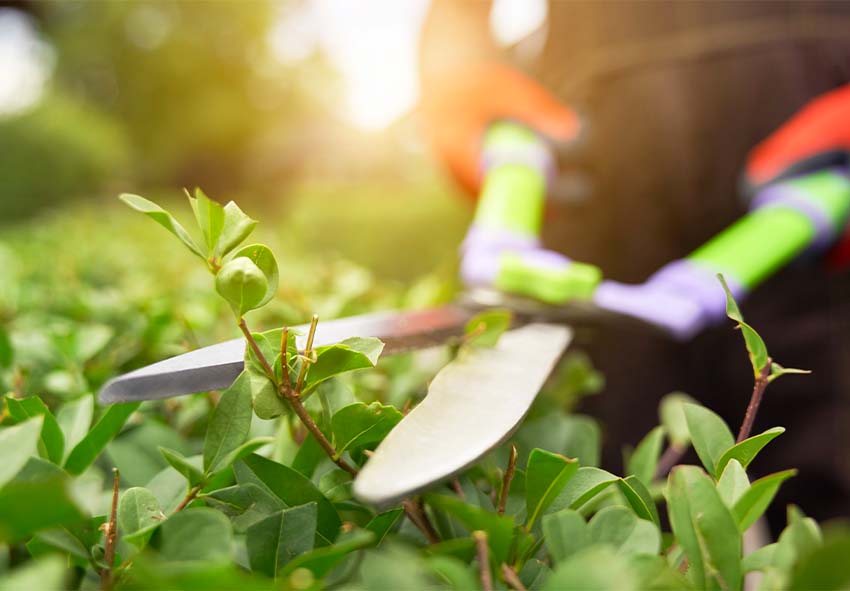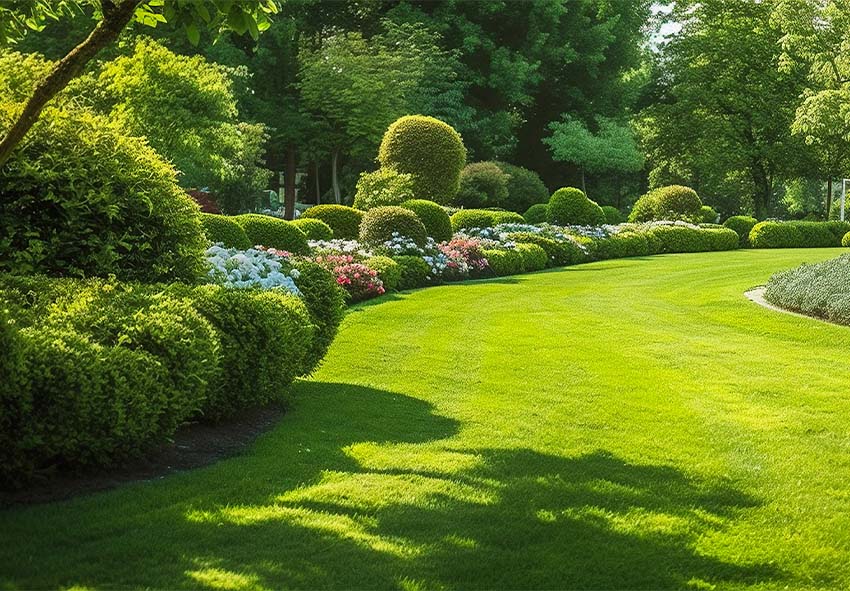Maintaining a healthy garden throughout the summer is crucial for ensuring its beauty and productivity. A thorough summer garden cleanup can help prevent disease, control pests, and keep plants thriving. In this article, we’ll cover essential tasks, tips, and the benefits of keeping your garden in top shape during the hot months. Our gardening blog is a perfect place to find any information you need.
Assessing Your Garden

Regularly assessing your garden is the first step toward effective maintenance. By carefully inspecting your plants and evaluating soil health, you can identify potential issues early and take necessary actions to address them. This proactive approach ensures a healthy and vibrant garden throughout the summer.
Inspecting Plants
Start by inspecting your plants for any signs of disease or pest infestation:
- Check for Signs of Disease: Look for discolored leaves, unusual spots, or mold.
- Identify Pest Infestations: Inspect plants for insects, holes in leaves, or webbing.
- Assess Plant Health: Observe for signs of stress such as wilting, yellowing, or stunted growth.
- Remove Damaged Parts: Prune away any dead or damaged leaves and stems to prevent spread of disease.
Evaluating Soil Health
Healthy soil is the foundation of a thriving garden. Test your soil’s quality and fertility to understand its nutrient levels and pH balance. This will help you determine if you need to add any amendments to improve its health. Soil testing kits are available at most garden centers and provide a comprehensive analysis of your soil’s condition.
Essential Summer Garden Maintenance Tasks

Summer garden maintenance involves several key tasks that are crucial for keeping your garden in optimal condition. From proper watering and weeding to pest and disease control, these tasks help ensure that your plants stay healthy and continue to thrive in the summer heat:
- Watering
Consistent and proper watering is essential during the hot summer months. Early morning is the best time to water your garden as it allows the plants to absorb moisture before the heat of the day. Ensure deep watering to reach the roots, and consider using soaker hoses or drip irrigation systems to conserve water and deliver it directly to the plants.
- Weeding and Mulching
Weeding is crucial to prevent unwanted plants from competing with your garden for nutrients and water. Regularly remove weeds to keep your garden beds clean. Mulching is another effective way to suppress weeds, retain soil moisture, and regulate temperature. Use organic mulch like straw, wood chips, or compost to provide these benefits while also enriching the soil.
- Pest and Disease Control
Monitor your garden for pests and diseases throughout the summer. Use natural or organic pesticides to manage pests, and remove any diseased plants to prevent the spread of infections. Integrated Pest Management (IPM) strategies, such as encouraging beneficial insects, can also help keep pest populations under control.
Pruning and Trimming

Pruning and trimming are vital for promoting plant health and encouraging new growth. By deadheading spent flowers, trimming shrubs and trees, and cutting back perennials, you can maintain a neat and attractive garden. These practices also help prevent disease and improve air circulation among plants.
Deadheading Flowers
Deadheading, or removing spent blooms, helps encourage plants to produce more flowers and prevents them from going to seed. This process can prolong the blooming season and keep your garden looking vibrant. Use clean, sharp scissors or pruning shears to cut off the faded flowers just above the first set of healthy leaves.
Trimming Shrubs and Trees
Proper pruning of shrubs and trees helps maintain their shape and health. Remove any dead or diseased branches, and trim for shape as needed. Use the right tools, such as hand pruners for small branches and loppers for larger ones, to make clean cuts.
Cutting Back Perennials
Some perennials benefit from being cut back in the summer to encourage new growth and more blooms:
- Identify Perennials Needing a Cut: Determine which perennials benefit from summer pruning, such as salvia, geraniums, and daylilies.
- Cut Back to Healthy Growth: Remove spent flowers and cut back stems to healthy leaves or buds to encourage new growth.
- Leave Foliage for Photosynthesis: Avoid cutting back too much foliage as it is essential for the plant’s photosynthesis and energy production.
- Control Plant Size: Trim back overgrown perennials to manage their size and shape, preventing them from overshadowing other plants.
- Promote Air Circulation: Prune dense growth to improve air circulation around the plant, reducing the risk of fungal diseases.
- Timing of Cuts: Cut back perennials in the early morning or late afternoon to reduce stress on the plants during the hottest parts of the day.
- Remove Dead or Diseased Parts: Regularly inspect and cut away any dead or diseased foliage to maintain plant health.
Lawn Care
Maintaining a healthy lawn in the summer involves regular mowing, watering, and fertilizing. Mow your lawn to the appropriate height, usually around 3 inches, to promote deep root growth and shade the soil. Water deeply and infrequently to encourage drought tolerance, and apply a balanced fertilizer to support growth.
Enhancing Garden Aesthetics

Enhancing your garden’s aesthetics not only adds visual appeal but also creates a more enjoyable outdoor space. Engaging in summer gardening allows you to ensure a colorful landscape throughout the season. Simple DIY projects and thoughtful plant arrangements can make a significant impact on your garden’s overall beauty.
Adding Seasonal Color
Planting summer annuals and perennials can add vibrant color to your garden. This table highlights some of the best heat-tolerant plants for adding seasonal color to your garden:
| Plant | Heat Tolerance | Best Placing | Additional Tips |
| Zinnia | High | Beds, Borders | Plant in full sun for vibrant blooms. Deadhead regularly to encourage continuous flowering. |
| Salvia | High | Borders, Containers | Requires well-drained soil. Deadhead to promote new blooms. |
| Portulaca (Moss Rose) | High | Containers, Beds | Thrives in poor, sandy soil. Needs minimal watering. |
| Begonia | High | Borders, Containers | Prefers partial shade. Keep soil moist but not soggy. |
| Sunflower | High | Beds, Borders | Plant in full sun. Requires regular watering during dry spells. |
Updating Garden Decor
Refreshing your garden decor can enhance its overall aesthetics. Consider adding new garden ornaments, such as sculptures, bird baths, or decorative stakes. DIY projects like painting old pots, creating garden signs, or building a trellis can also add a personal touch to your garden space.
Conclusion
A comprehensive summer garden cleanup is essential for maintaining a healthy and beautiful garden. By assessing your garden, performing essential maintenance tasks, pruning and trimming, and enhancing aesthetics, you can ensure your garden thrives all season long. You can also look for more information about autumn and spring gardening to ensure your plants are properly cared for all year round. Implement these practices to enjoy a lush, vibrant garden throughout the summer.
Frequently Asked Questions (FAQs) about Summer Garden Cleanup
1. When is the best time to start summer garden cleanup?
The best time to start summer garden cleanup is in early summer, just as the growing season is in full swing. This allows you to address any issues that have arisen in spring and prepare your garden for the hotter months ahead. Regular maintenance throughout the summer will help keep your garden healthy and vibrant.
2. What summer annuals and perennials can I find in your online store?
Our online store Dutch-bulbs.com offers a wide variety of heat-tolerant summer plants, including annuals like begonias and salvia, as well as perennials like phlox, sedum and geranium. Explore our selection to find the perfect plants to add seasonal color and enhance your garden’s aesthetics this summer.
3. How often should I water my garden during the summer?
Watering frequency depends on your local climate, soil type, and the specific needs of your plants. Generally, most gardens need watering every 2-3 days during hot, dry periods. It’s best to water early in the morning or late in the evening to minimize evaporation and ensure that plants get the moisture they need.
4. What are the signs of soil health problems, and how can I fix them?
Signs of soil health problems include poor plant growth, yellowing leaves, and compacted or waterlogged soil. To fix these issues, test your soil to check its pH and nutrient levels. Amend the soil with organic matter like compost or mulch to improve its structure and fertility. Regularly aerating the soil can also help.
5. Which tools are essential for summer garden pruning and trimming?
Essential tools for summer pruning and trimming include sharp pruners or shears, loppers for thicker branches, a hand saw for larger cuts, and a pair of gloves to protect your hands. It’s also helpful to have a disinfectant to clean your tools between cuts to prevent the spread of disease.
Published: 20.06.2024
